Over the years we’ve had the pleasure of profiling many of Bram Frank’s blades. Most recently, we evaluated the Magnum Persian and Magnum Tanto. This time around, we’re looking at yet more entries in the cohesive series of knives Bram offers, all of which have the same size and material specifications. The difference is in the blades or, in the case of the CRMIPT, the lack thereof.
Bram’s name has been on a lot of knives over the years, all of which are recognizable as his. Spyderco’s Gunting knives were the first Bram Frank folders I ever handled. In the intervening years, German manufacturer Cherusker Messer produced some of Bram’s designs. Today all of the knives in his product line are manufactured overseas in a small factory dedicated to producing them.
At the risk of repeating myself (and Bram), he is a pragmatic instructor who believes human beings are, first and foremost, tool users. “Given a choice of ‘tool’ or ‘no tool’ we will invariably choose to use a tool,” he explains. “Since tools exist to make work easier and to allow us to function at peak efficiency… we willingly seek out tools to accomplish even the simplest tasks.”
Bram was among the first advertisers at the earliest version of The Martialist. He was also personally supportive of our efforts here, encouraging us to build an online magazine that has remained a driving force in the online “tactical” community since 2003. The founder of Common Sense Self-Defense/Street Combat, Bram Frank has spent nearly fifty years training in the martial arts. He holds an 8th dan Modern Arnis and, given that, there’s no doubt that Filipino martial styles and systems heavily influence his methodology. Over the course of his career he has done a variety of self-defense instructional videos, through companies like Paladin Press and Video Quest, and has been featured in publications ranging from SWAT, Guns and Ammo, Police Journal, Tae Kwon Do & Korean Combative Arts, Filipino Martial Arts, and Tactical Knives.
Bram Frank LLC Magnum Dagger and Magnum Spearpoint
Like all of the other folders Bram’s company produces, the Dagger and Spearpoint come in two sizes: Standard and Magnum. I prefer the Magnum versions because I have large hands; that is the size you see in these pictures. There is no doubt that a folding knife this size will not be for everyone, either because of your local laws or because the knife simply isn’t comfortable in your grip. That said, I have always adored these and enjoy working with them. I never feel “under armed” when carrying a Magnum-sized LLC folder.
At first glance, the Spearpoint and Dagger are almost identical. There are subtle differences in the grind, however. The Dagger model has a pronounced choil that allows you to choke up for fine work. The Spearpoint model does not have this.
The pronounced ramp, or “Bramp,” immediately identifies these knives as belonging to Bram’s product line. This protrusion has two uses: It can be used to open the knife kinetically on an opponent’s body (but NEVER on your own limbs, as you could be cut) or, when closed, it can be used to deploy the tool like a tiny hammer or hatchet. In hatchet mode the knife delivers painful, even debilitating strikes and could even be used to facilitate pressure point strikes and joint locks. The butt of the knives is also designed for blunt strikes.
Chopping away with the Bramp as if the tool is a little tomahawk is something I find very effective. Again, because I can bring enough force to bear, and because the knife is secure in my grip, this seems like a natural option to me. I know over the years there have been those who criticize the notion of using a knife as an impact weapon. These objections usually fall under the heading of legal anxiety. If you use a potentially lethal weapon for less-lethal self-defense, didn’t you still use a lethal weapon?
Well, for one, a knife that can be used for strikes when closed is a knife you don’t have to open if you are responding to an initiated attack. Two, there are times when, while I might be legally and morally justified in cutting someone, I just don’t want to expose myself to their blood. Three, while you may cut someone open striking with the Bramp, blunt force can sometimes provide a deterrent that a cut with a razor-sharp knife cannot. The white light and pain of being struck in the head with the Bramp could conceivably be noticed more readily than a slice with the blade… at least initially.
The knives feature multiple indexing points, including the spoon-shaped divot in the pocket clip. The “post in the hole” indexing circles are intended to facilitate grip changes, in fact. There is also a triangular hole in the Bramp for more conventional one-hand opening. The pocket clip is reversible for right- or left-hand use, oriented for tip-down carry only. The handle shape is marketed as “bio mechanical” for ergonomics and retention under stress, allowing a locked three-finger grip similar to what you might use on a firearm.
The Magnum-sized blades are six inches closed, with four-inch blades. Blade steel is 8Cr13M0V steel, the Chinese equivalent to AUS-8, hardened to HRC 56-58. Handle scales are G10, which (combined with the jimping everywhere) provide excellent traction.
Fit and finish is good, with no blade play. The blade opens smoothly and locks positively. I have always found that position for the lock a little awkward to disengage with one hand, but with practice I’m getting better at it all the time. I’ve never been a student of Bram’s system, so I don’t have that specialized expertise, but neither is that necessary to own and use these knives.
The liners are hardened steel, while the dual-access pivot pin is polished. The “compound puzzle lock” is a dovetail joint-into-blade arrangement similar to the “compression lock” found on some other knives. (The lock is actually an improvement on the compression lock, as it features a stop pin for, as Bram puts it, “Mr. Murphy.” It looks like nothing so much as a liner lock in the dorsal, rather than the ventral side of the handle.
As with all of Bram’s folding knives, the Dagger and Spearpoint cut well, open smoothly, lock securely without play, and penetrate test media quite well. These are, thanks to their weight, size, and blade profiles, both able slicers and very emphatic impact tools. What they are not is “gent’s folders.” You will know you are carrying a Magnum LLC folder when it is in your pocket and, truth be told, I tend to carry mine in my waistband most of the time. Where I find these folders work best is in the outer pocket of a heavy winter coat during the cold months (of which there are many where I live).
Close Range Medium Impact Tool (CRMIPT)
Then there’s the CRMIPT2, or “Close Range Medium Impact Tool.” This is essentially the same “knife,” but with an unsharpened, rounded “blade.” It is a striking tool, not a knife, and represent’s Bram’s latest version of an implement he has offered before. Like that of his knives, the CRMIPT’s “blade” is AUS8 steel hardened to 56-58 RC. Standard and Magnum sized CRMIPTs measure 6.5 and 10 inches (open, overall), respectively.
The tool exhibits good fit and finish throughout. The top-mounted lock will seem familiar to anyone who handled the previous “Gunting” folders. The liners themselves are full-length, incorporating bronze phosphor washers. Scales are textured G10, providing excellent traction, while the unsharpened “blade” portion of the tool (with its ramp) is jimped. Even the integral seat belt and flex-cuff cutter is grooved, while the pocket clip incorporates an indentation used to facilitate indexing in the hand.
Bram’s website describes the CRMIPT as a “non-lethal mini expandable tool that can expand and retract, all within use-of-force, allowing for trapping, control, takedown, impact, and restraint of individuals. [It] can easily be used against other tools or weapons of opportunity with measured force.” This concept, of course, is as basic as that of a pocket stick or kubotan.
A rigid implement of steel and G10 is harder than any part of the body, does not feel pain, and can concentrate the force of a blow on a much smaller area. This gives every strike more power and allows the user to deal physical damage or to inflict pain — the goal of the latter being to assert control and bring physical compliance. This is of particular significance where the CRMIPT2 is concerned because Frank is actively marketing the implement to law-enforcement agencies. It is already SOP with the Hialeah, Florida police department under Chief Mark Overton. The CRMIPT2 allows the introduction of blunt force and pain compliance in a package that is less lethal than knives and even tasers (the use of which has, on occasion, resulted in the death of the subject).
“Combat must be simple,” writes Bram. “The hardest one to reconcile is the act of self-defense as done by the on-site LEO (Law Enforcement Officer). …We expect more from the uniform than we do the regular citizen.” The CRMIPT2 allows both LEO personnel and civilians alike to block, strike, poke, trap, and exert pain-compliance force without (in theory) delivering a level of damage that will kill the attacker. The ramp of the CRMIPT2 can be used to “tomahawk” the opponent, and to snap open the “blade,” while the seatbelt cutter can be used as a glass breaker in emergency situations.
This is a multi-purpose tool that incorporates the best features of both a pocket stick and purpose-built compliance and leverage tools. The goal is to facilitate everything from blunt force to wrist-locks and other maneuvers, all according to the system that Bram Frank teaches to the public and to law enforcement agencies.
Big Blades for Big Jobs
I like these knives. I like Bram Frank. I like the approach these tools take, both to a comprehensive and cohesive product line, and to a bold statement on the viability of self-defense with both a knife and an impact tool. I believe there is something for everyone in Bram’s offerings. Not shown here are the red-handled trainers Bram provides, which are essential for learning with such an effective and potentially lethal weapon. If you choose to purchase one of these, please do tell Bram Frank that the staff of The Martialist said hello. We encourage you to do both.
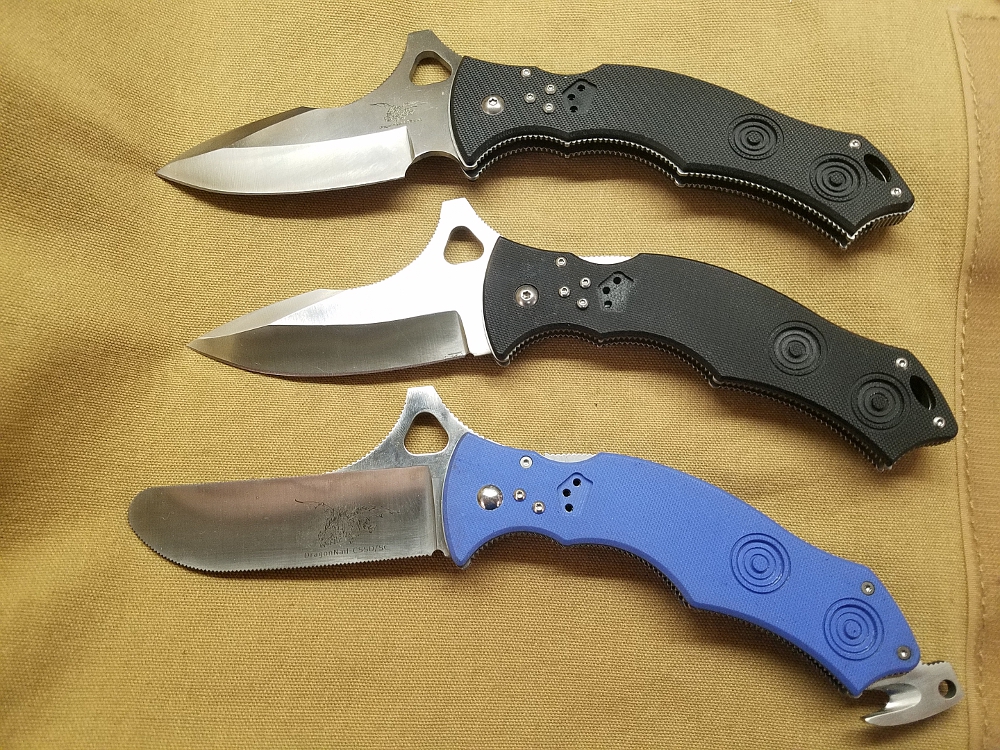
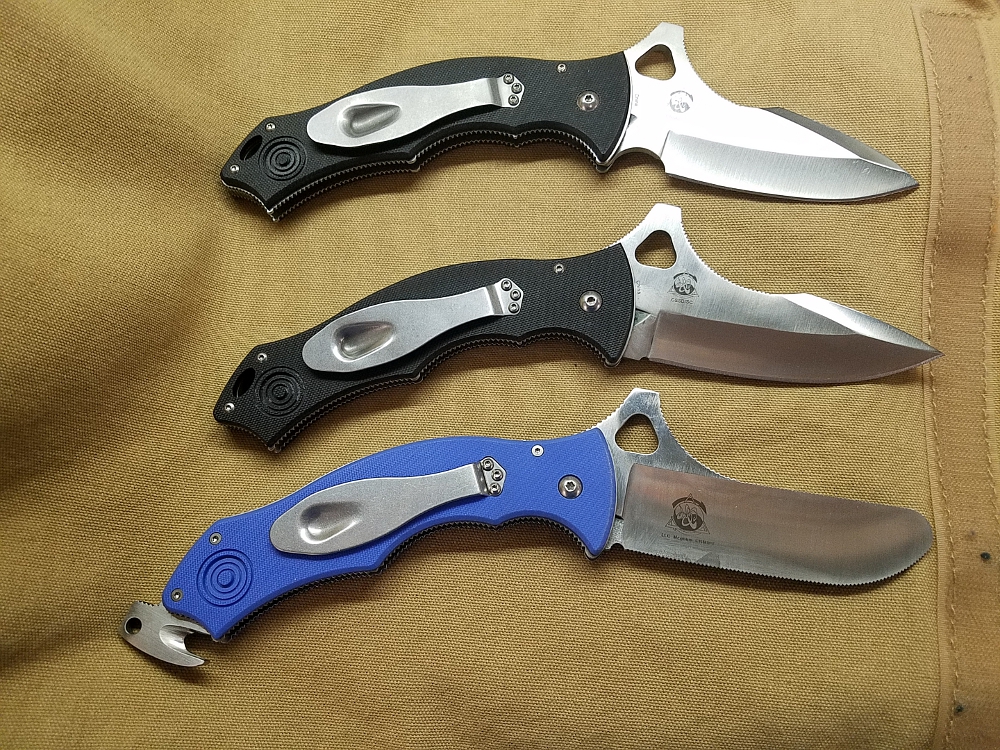
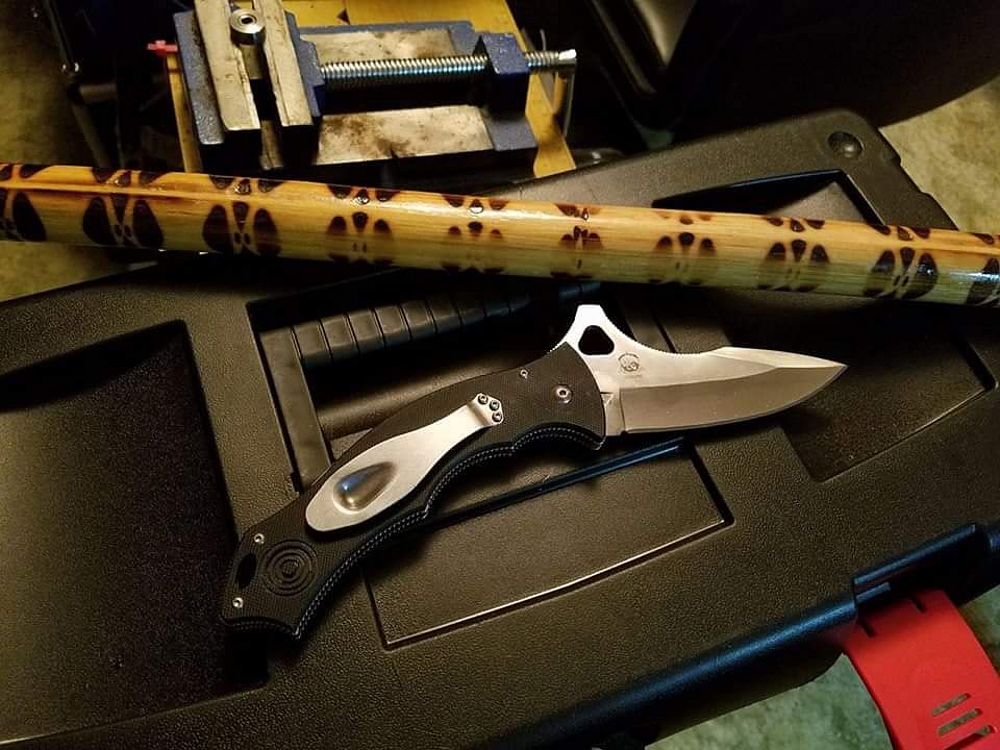
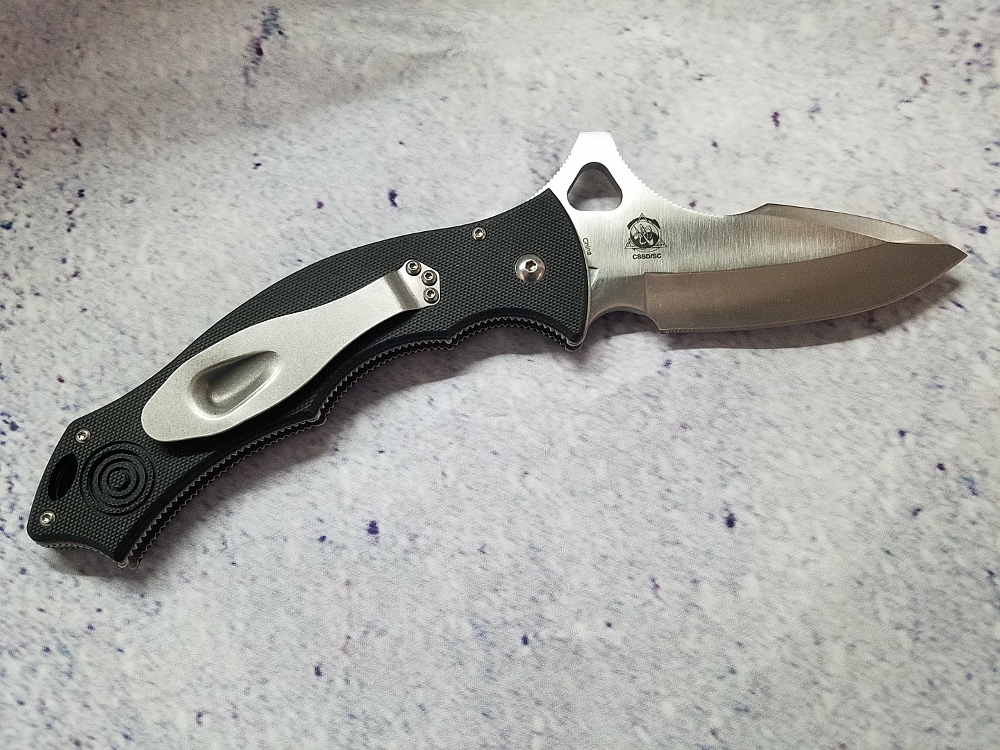
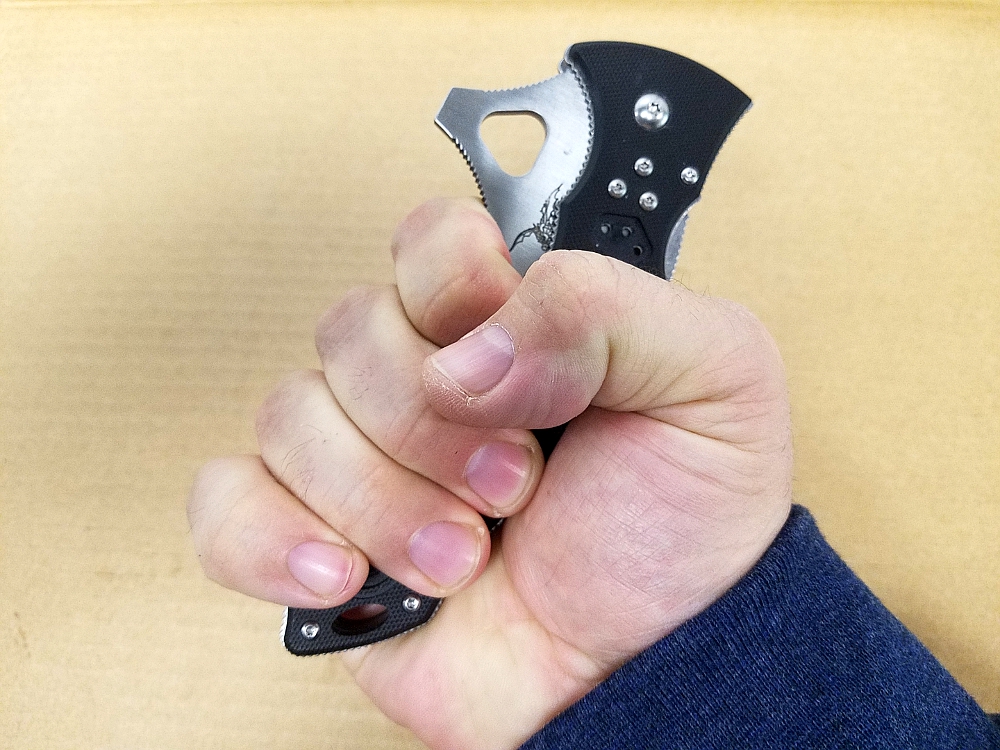
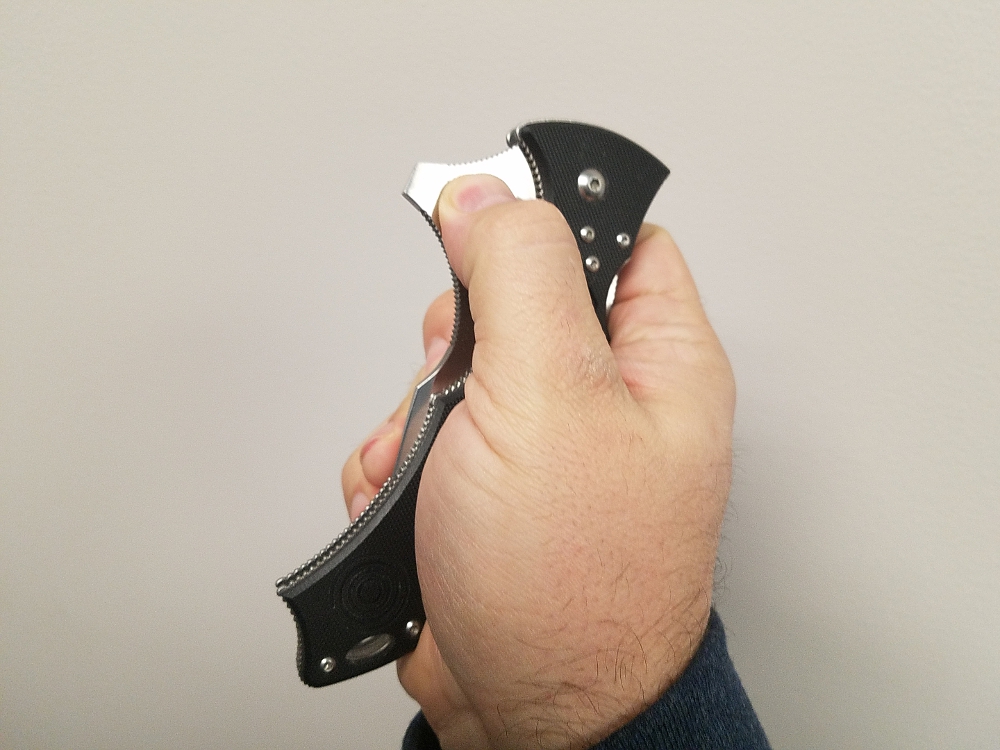
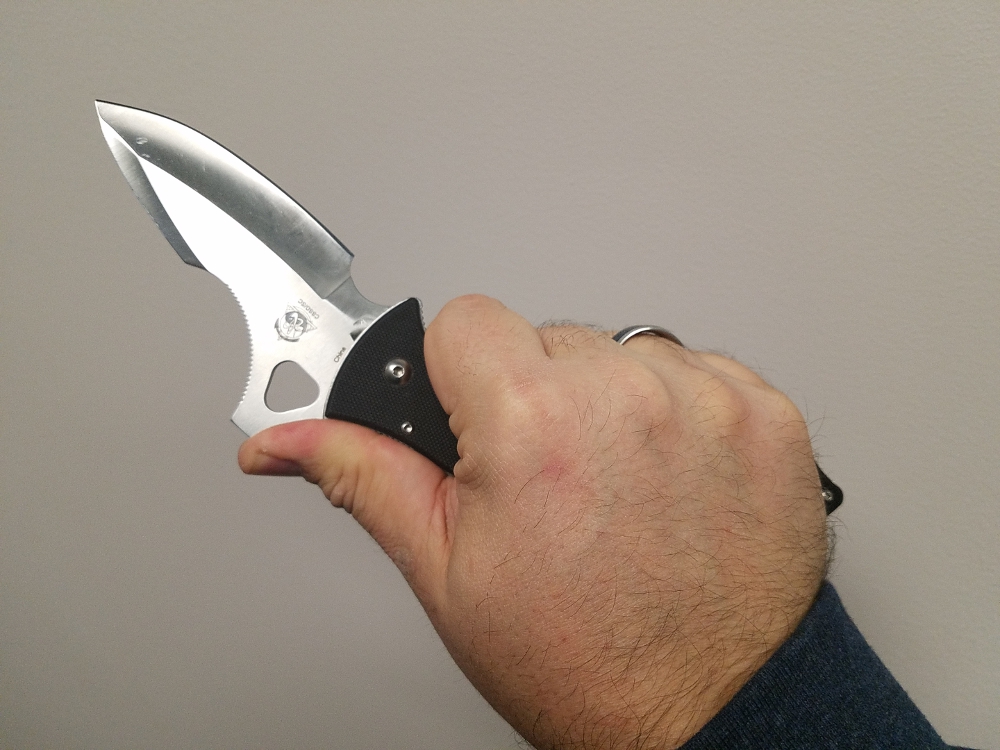
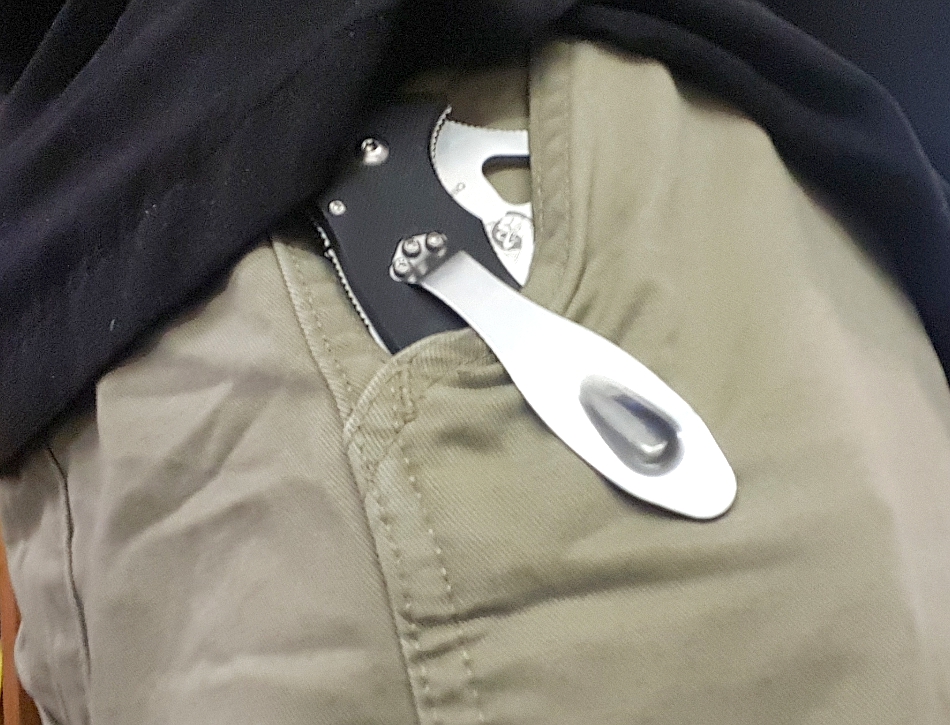
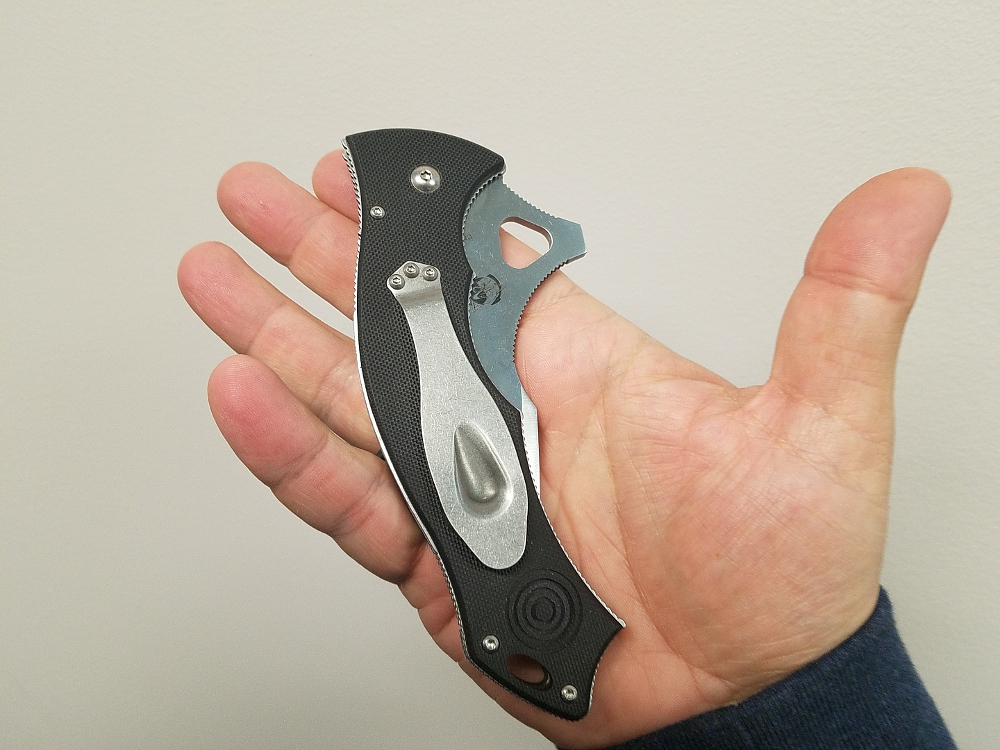
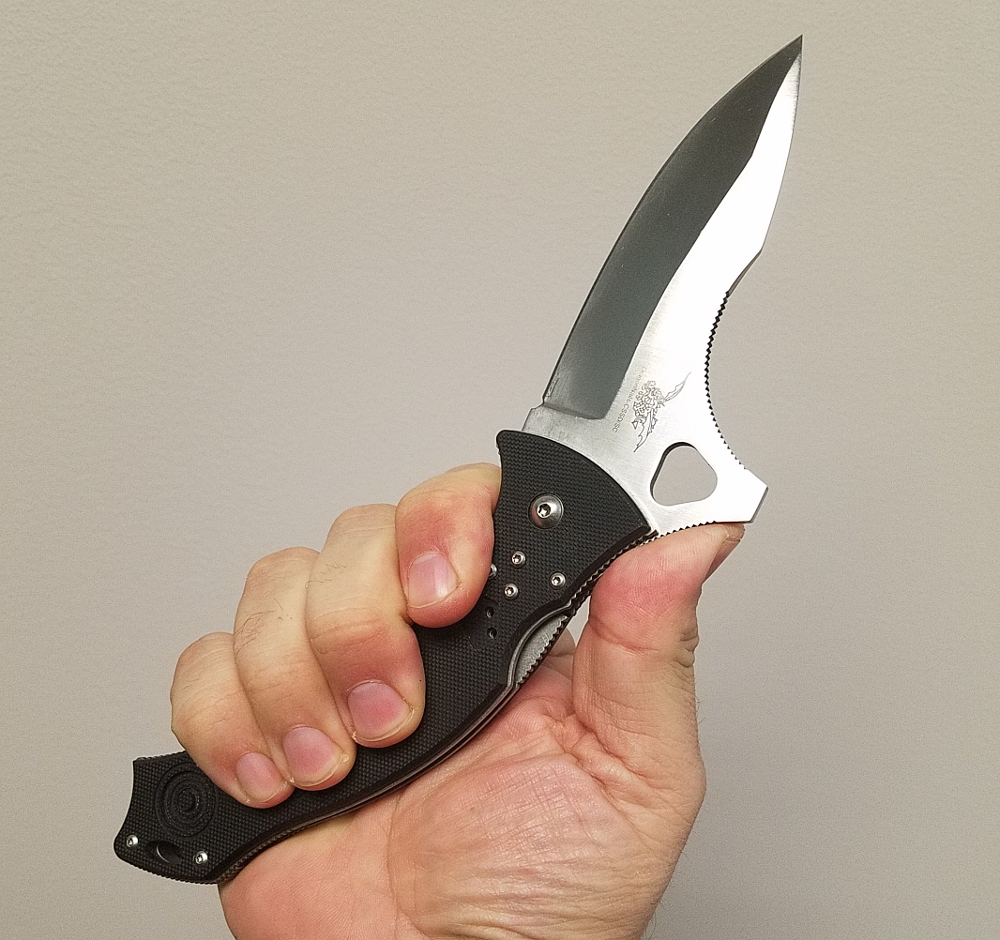
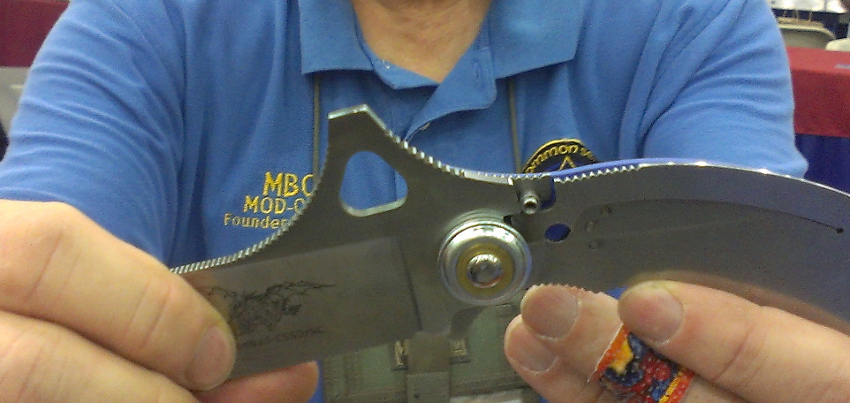
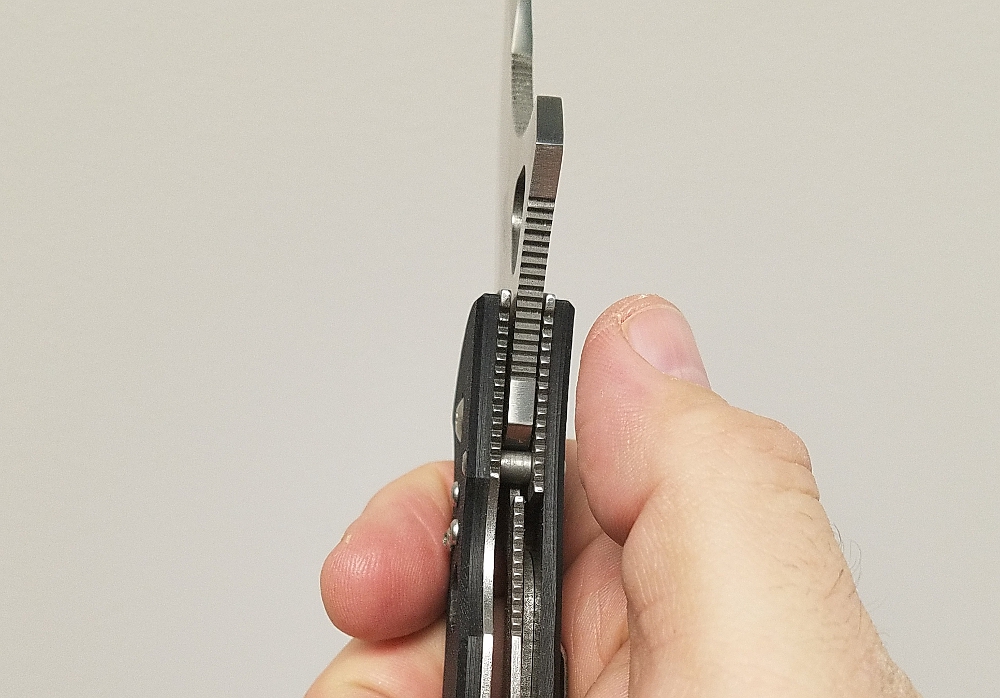
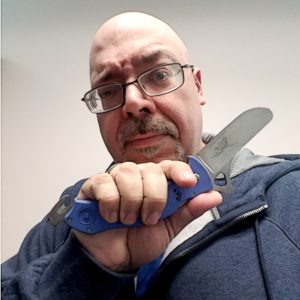
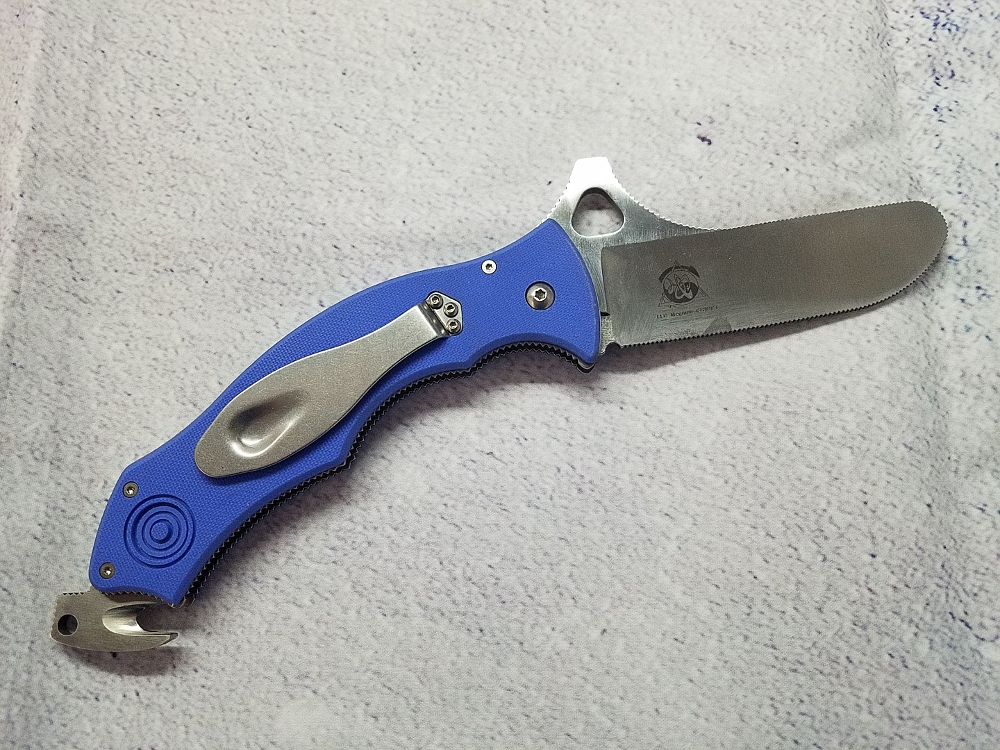
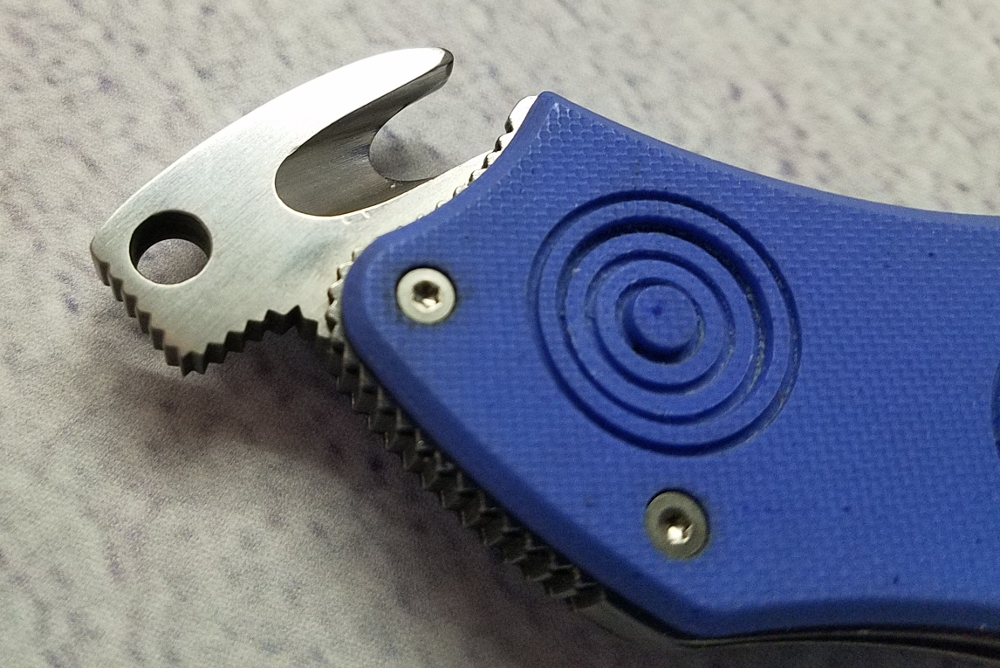
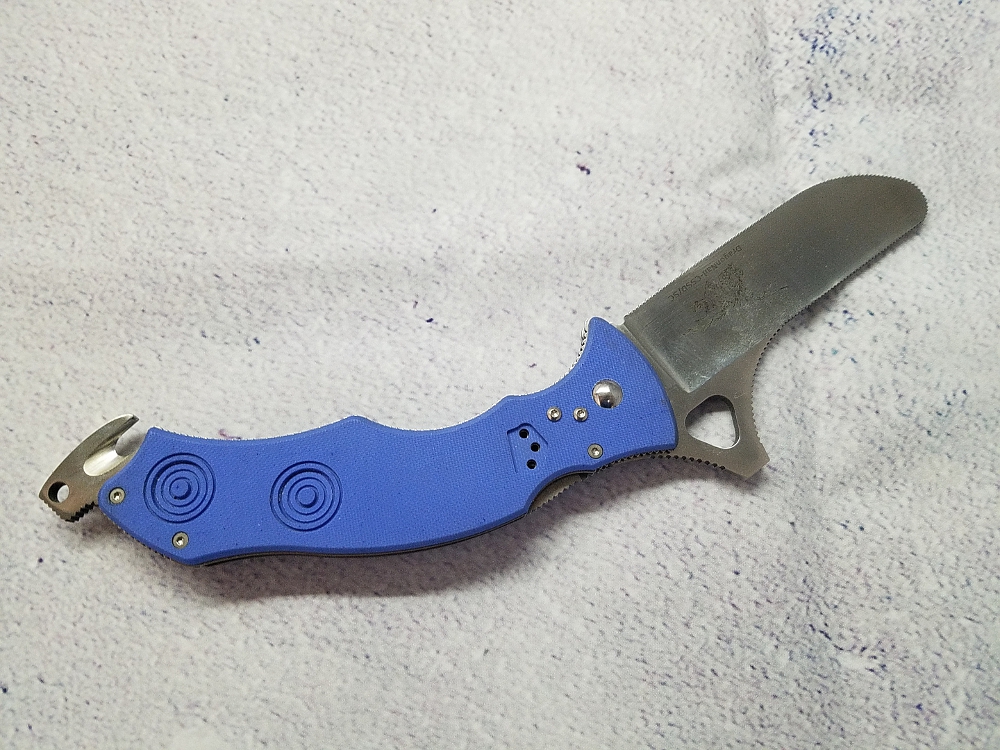
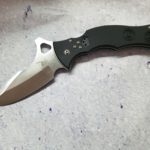
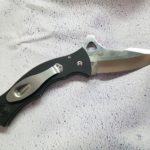
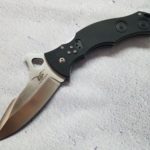
I find the review to be accurate, reasonable and without any hype. I have had and carried Brian’s folders since they were first produced by Spyderco under the :Gunting” terminology and the handles were straight and the only version was the smaller ‘corto’ size: 5 inch handle and 3 inch blade.
At the time one could buy a Gunting live blade and a red handle trainer, the Drone. I took Brian’s advice and brought the pair. The blades were so new, my trainer was numbered.
Obviously the Drone made training safer for everyone and none of my students ever got cut working with the Drone. On the other hand, l know of a number of experienced martial artist who ignored Brian’s advice and initially only purchased live blades. They came to regret that decision as they and/or a student(s) were cut during training sessions.
My first magnum sized folder was the Crmipt and came with the seat belt cutter attachment. That tool felt a lot better in my hand and was/is the perfect self-defense tool that l could carry when l was going to places that forbade anyone from carrying a weapon (knife or gun). The Crmpt is the ideal tool because it can not be used to cut, slice or stab an opponent, but allows you to strike and lock someone who attempting to criminally assault you.
I highly recommend the Lapu Lapu line of folders and in particular l recommend them to women if they ate willing to put the time in to get the proper training from a CSSD/SC instructor, certified by GM Bram Frank and are committed to self practice at home. These are very handy and effective self defense tools, whether one chooses a live blade, a Crmipt (with or without the seat belt cutter) or a Drone.
I have a unique question. While these are super-knives for self protection and combat, would they also serve a person in a utilitarian fashion, such as to be used for everyday cutting chores, from opening mail to making sandwiches and for emergency survival in the wilderness if needed? I know some self defense knife masters do not believe a person should use their self defense knife for utility cutting chores, but what do you think ?
You could use these as utility knives, sure, but if you carry a knife for self-defense, it’s better to carry a separate utility blade. I carry a Swiss Army Knife for utility.